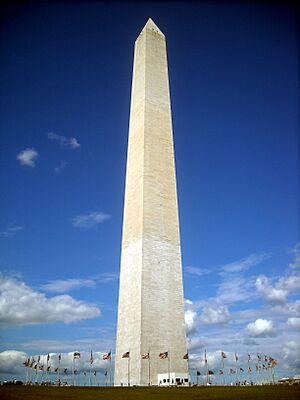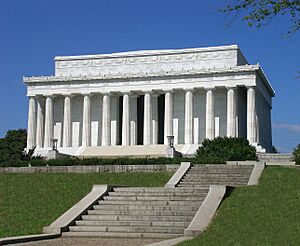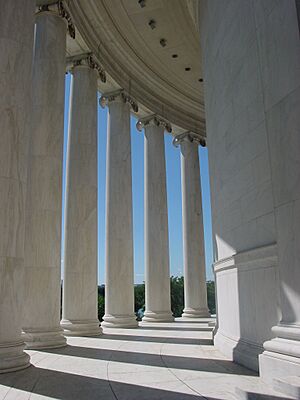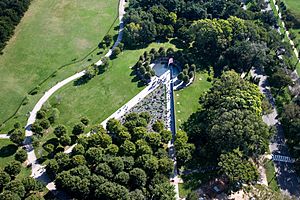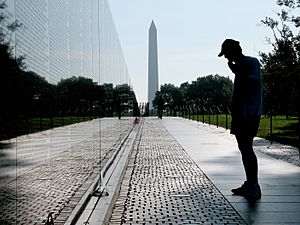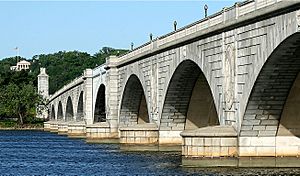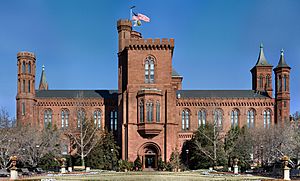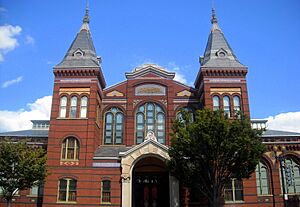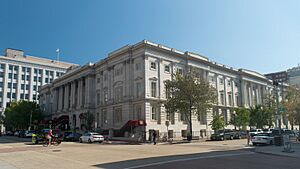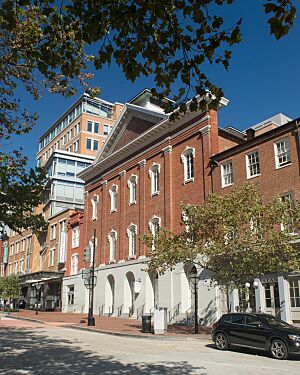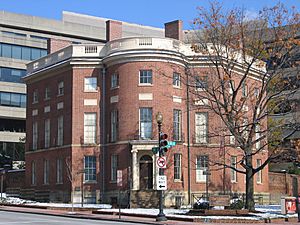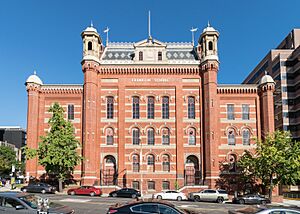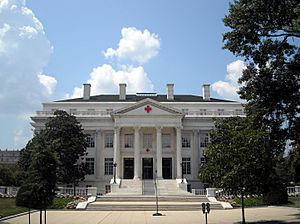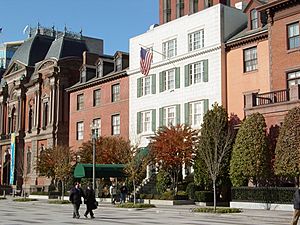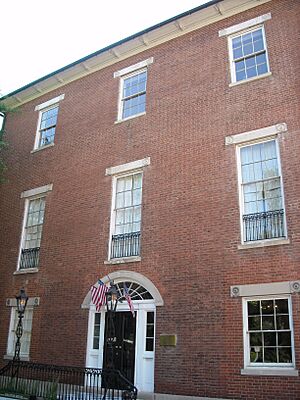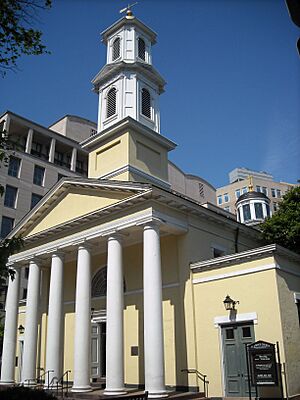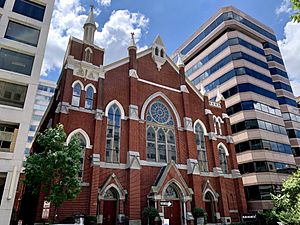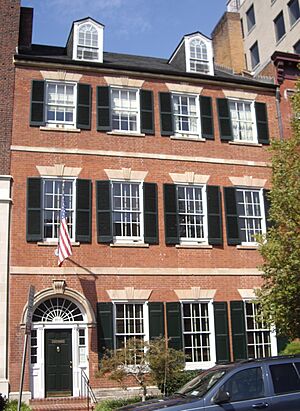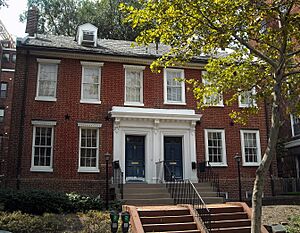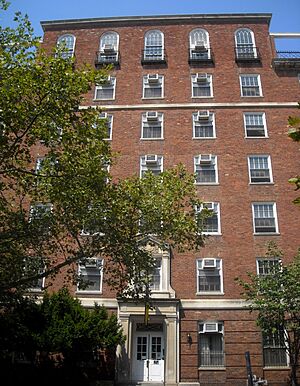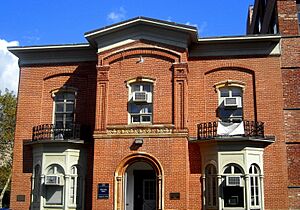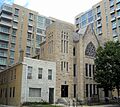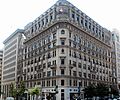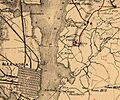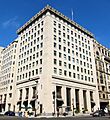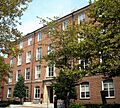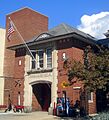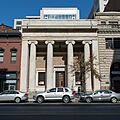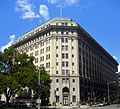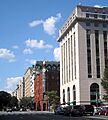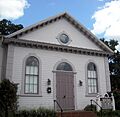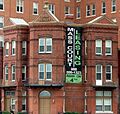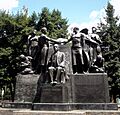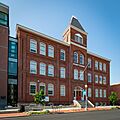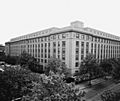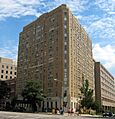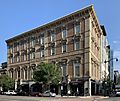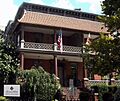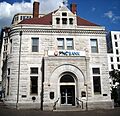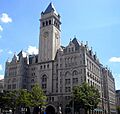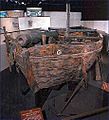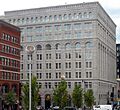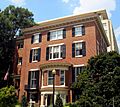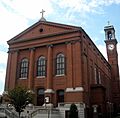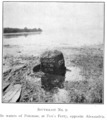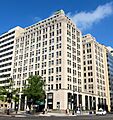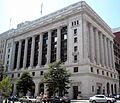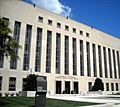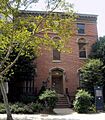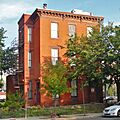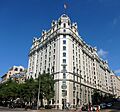National Register of Historic Places listings in central Washington, D.C. facts for kids
The National Register of Historic Places is a special list of buildings, places, and objects in the United States that are important to American history, architecture, archaeology, engineering, or culture. Think of it like a Hall of Fame for historic sites! When a place is added to this list, it means it's recognized for its unique value and efforts are made to protect it for future generations. This list focuses on many amazing historic spots right in the heart of Washington, D.C., including famous areas like the National Mall and Downtown.
Contents
Exploring D.C.'s Historic Treasures
Washington, D.C., is full of incredible buildings and landmarks that tell stories of the past. Many of these are listed on the National Register of Historic Places. Let's discover some of the most interesting ones in the central part of the city.
Famous Landmarks You Might Know
The Washington Monument
One of the most famous sights in D.C. is the Washington Monument. This tall, white obelisk honors George Washington, America's first president. It stands proudly on the National Mall, reminding everyone of his leadership. It was added to the National Register in 1966.
The Lincoln Memorial
At the western end of the National Mall, you'll find the impressive Lincoln Memorial. This grand monument honors Abraham Lincoln, the 16th U.S. President, who led the country during the Civil War. Many important speeches and events have happened here, including Martin Luther King Jr.'s "I Have a Dream" speech. It joined the Register in 1966.
The Jefferson Memorial
Across the Tidal Basin, surrounded by beautiful cherry trees, is the Jefferson Memorial. This memorial celebrates Thomas Jefferson, a Founding Father and the third U.S. President, who wrote the Declaration of Independence. It's a peaceful spot to reflect on American ideals. This memorial was listed in 1966.
Korean War Veterans Memorial
Near the Lincoln Memorial, the Korean War Veterans Memorial honors those who served in the Korean War. It features statues of soldiers and a reflective wall, creating a powerful and moving experience. It was added to the Register in 1995.
Vietnam Veterans Memorial
The Vietnam Veterans Memorial is another powerful site. It's a black granite wall engraved with the names of service members who died or went missing during the Vietnam War. It's a place for quiet reflection and remembrance. This memorial was listed in 1982.
Arlington Memorial Bridge
Connecting Washington, D.C., with Arlington, Virginia, the Arlington Memorial Bridge is more than just a way to cross the Potomac River. It's a symbol of unity between the North and South after the Civil War. It was added to the Register in 1980.
Buildings with Important Stories
The Smithsonian Institution Building
Often called "The Castle," the Smithsonian Institution Building is one of D.C.'s most recognizable buildings. It was the first home of the Smithsonian, a group of museums and research centers. It's a great place to start your visit to the museums. It was listed in 1966.
Arts and Industries Building
Right next to "The Castle" is the Arts and Industries Building, another part of the Smithsonian. This building was the second home for the Smithsonian's collections and hosted President James A. Garfield's inaugural ball. It's a beautiful example of Victorian architecture. It joined the Register in 1971.
General Post Office
The General Post Office is a grand building that once handled all the mail for the city. Today, it's a hotel, but its historic architecture still stands out. It was listed in 1969.
National Archives
The National Archives is where America keeps its most important documents, like the Declaration of Independence, the Constitution, and the Bill of Rights. It's a place where you can see the very foundations of American democracy. It was added to the Register in 1971.
Ford's Theatre
Ford's Theatre is a very important, but also sad, place in American history. It's where President Abraham Lincoln was assassinated in 1865. Today, it's a working theater and a museum that tells the story of Lincoln's life and legacy. It was listed in 1966.
The Octagon House
The Octagon House is a unique, eight-sided building with a fascinating past. After the White House was burned during the War of 1812, President James Madison and his wife, Dolley, lived here temporarily. It was listed in 1966.
Franklin School
The Franklin School is a beautiful old school building. It's famous because Alexander Graham Bell conducted some of his early experiments with the photophone (a device that transmitted speech using light) here. It was added to the Register in 1973.
American Red Cross National Headquarters
The American Red Cross National Headquarters is the main office for the American Red Cross, a famous organization that helps people in emergencies and disasters. This building represents their important work. It was listed in 1966.
Blair House
Blair House is known as the "President's Guest House." It's where visiting heads of state and other important guests stay when they come to Washington, D.C. It's right across the street from the White House. It was added to the Register in 1966.
Decatur House
The Decatur House is a historic home designed by famous architect Benjamin Henry Latrobe. It was built for naval hero Stephen Decatur. Later, several Secretaries of State lived here. It was listed in 1966.
St. John's Episcopal Church
Known as the "Church of the Presidents," St. John's Church is located right across from the White House. Many U.S. Presidents have attended services here. It was added to the Register in 1966.
Metropolitan African Methodist Episcopal Church
The Metropolitan African Methodist Episcopal Church is a beautiful Gothic-style church. It has hosted the funerals of important figures like Frederick Douglass and Rosa Parks, making it a significant place in civil rights history. It was listed in 1973.
University Buildings with History
Cleveland Abbe House (Arts Club of Washington)
The Cleveland Abbe House is a historic home where Cleveland Abbe, known as the "father of the National Weather Service," lived for many years. Before him, President James Monroe and the British legation also stayed here! It's a great example of Federal-style architecture. It was listed in 1969.
Lenthall Houses
The Lenthall Houses are two of the oldest known houses built in Washington, D.C. They are now part of George Washington University. These homes offer a glimpse into the early days of the city. They were added to the Register in 1972.
President's Office, George Washington University
This building is part of the George Washington University School of Law and sits on the historic University Yard. It's a key part of the university's long history. It was listed in 1991.
Hattie M. Strong Residence Hall
Named after a generous donation, Hattie M. Strong Residence Hall is a women's residence hall at George Washington University. It's a place where students live and learn, continuing the university's traditions. It was added to the Register in 1991.
Maxwell Woodhull House
The Maxwell Woodhull House is another historic building at George Washington University. It now houses the Albert Small Washingtonia Collection, which includes many interesting items about Washington, D.C. It was listed in 1991.
Images for kids


